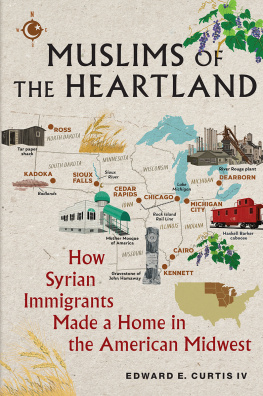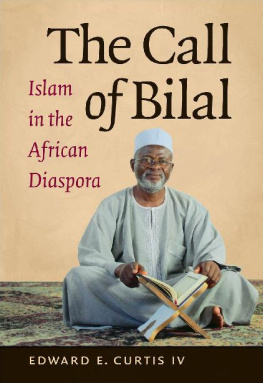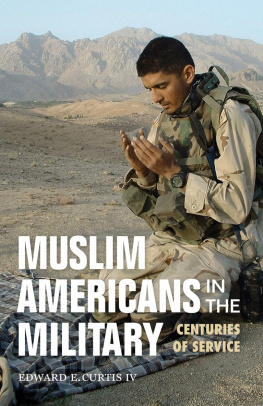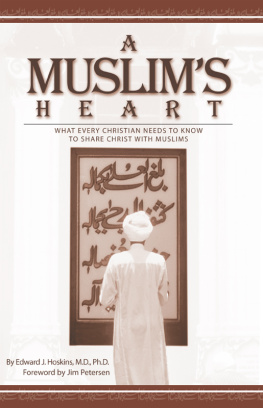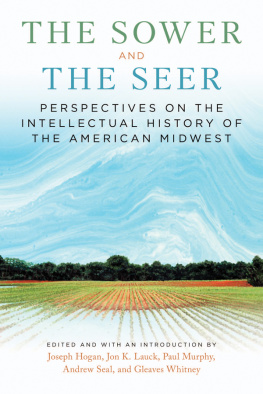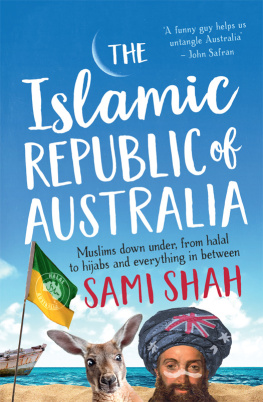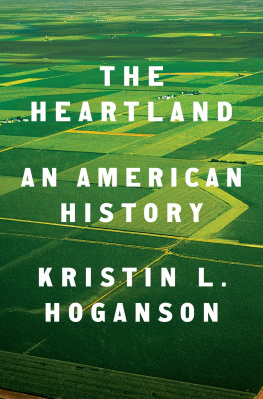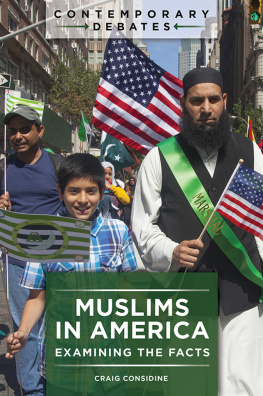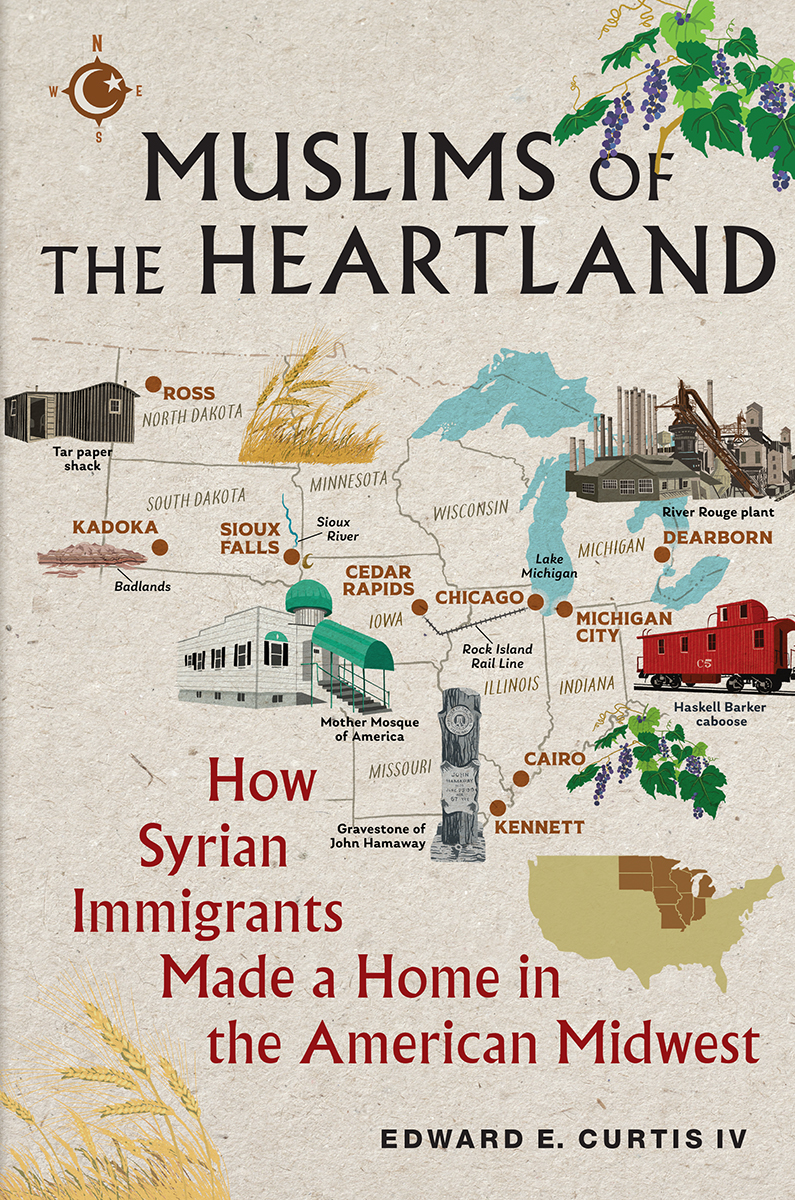
Muslims of the Heartland
Muslims of the Heartland
How Syrian Immigrants Made a Home in the American Midwest
Edward E. Curtis IV

NEW YORK UNIVERSITY PRESS
New York
NEW YORK UNIVERSITY PRESS
New York
www.nyupress.org
2022 by New York University
All rights reserved
References to Internet websites (URLs) were accurate at the time of writing. Neither the author nor New York University Press is responsible for URLs that may have expired or changed since the manuscript was prepared.
Library of Congress Cataloging-in-Publication Data
Names: Curtis, Edward E., IV, 1970 author.
Title: Muslims of the heartland : how Syrian immigrants made a home in the American Midwest / Edward E. Curtis IV.
Other titles: How Syrian immigrants made a home in the American Midwest
Description: New York : New York University Press, [2021] | Includes bibliographical references and index.
Identifiers: LCCN 2021014002 | ISBN 9781479812561 (hardback) | ISBN 9781479812608 (ebook) | ISBN 9781479812578 (ebook other)
Subjects: LCSH: Syrian AmericansMiddle WestHistory20th century. | MuslimsMiddle WestHistory20th century. | Muslim familiesMiddle WestSocial conditions. | Middle WestRace relationsHistory20th century.
Classification: LCC F358.2.S98 C87 2021 | DDC 977/.0049275691dc23
LC record available at https://lccn.loc.gov/2021014002
New York University Press books are printed on acid-free paper, and their binding materials are chosen for strength and durability. We strive to use environmentally responsible suppliers and materials to the greatest extent possible in publishing our books.
Manufactured in the United States of America
10 9 8 7 6 5 4 3 2 1
Also available as an ebook
To the memory of Cassie Moses Saffa Caffery, my maternal grandmother
Contents
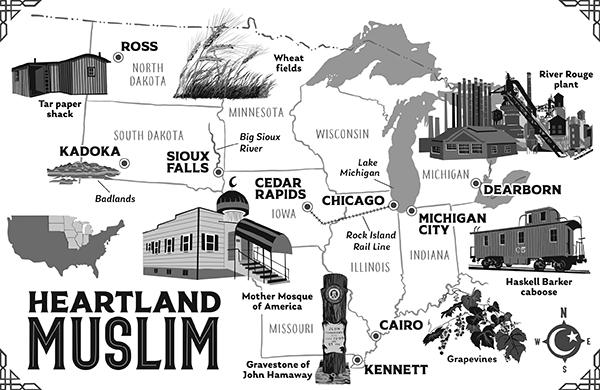
Heartland Muslim Map. Created by Scott Schiller.

Places of Origin Map. Created by Scott Schiller.
- Mike Ahmid Abdallah (18871974), farmer from Rafid in the Bekaa Valley, located in contemporary Lebanon. Farmers Union member. Raised sheep. Second husband of Lila Abdallah.
- Hasibe Aossey (19031996), co-founder of Rose of Fraternity Lodge in Cedar Rapids. Grocer. From the village of Insar, located today in the south of Lebanon. Moved to Cedar Rapids in 1927. Daughter of a Shia Muslim shaykh, or religious teacher.
- Mike Muhammad Aossey (c. 19001995), immigrated from Insar. Brother of Abdoo, Sam, and David, who also went to Iowa. Peddler. Quaker Oats employee. Grocer.
- Hussien Ayad (18901983), immigrant to Michigan City, Indiana. Railroad track layer and factory employee.
- Joe Hassan Chamie (18871918), immigrated to Sioux Falls, South Dakota. Served in Company I, 361st Infantry, 91st Division of the US Army. Died 1918 during the Meuse-Argonne offensive.
- Boaley Farhat (18841964), immigrant from Rafid, originally went to Costa Rica. Owned 160 acres in Ross, North Dakota, by 1911. Pacifist. Progressive. Husband of Rosanna Lynch. Father of ten kids.
- Aliya Ogdie Hassen (19101991), born outside Kadoka, South Dakota, in 1910. Daughter of Fatima Juma Hajj and Alex Ogdie. Grew up in Sioux Falls, South Dakota. Moved to Detroit in 1925. Poet. Lover of dance. Collector of family lore.
- Fatima Hamed Igram (19162008), born in Fayette County, Iowa. Cedar Rapids Muslim community leader. Wife of Hassan Igram. Stepmother to Abdullah Igram, World War II veteran.
- Hassan Igram (18981980), peddler, utility worker, and grocer in Cedar Rapids, Iowa. Immigrated from Joub Jennine in the Bekaa Valley. Husband first of Goldie Gregg, then of Fatima Hamed. Father of Abdullah.
- Mary Juma (18641947), immigrant from Bire (Bee-reh) in the Bekaa Valley. Peddler. Sodbuster. Arrived in North Dakota with husband, Hassen, in 1902. Gave birth to Charles in 1903 in town of Ross.
- Sam Omar (18821956), homesteader in Ross, North Dakota. Immigrated from Bire. Wheat farmer.
- Allie Joseph Said (19141943) from Michigan City, Indiana. Moved to Dearborn, Michigan. Died while serving with the US Army Air Forces in World War II.
- Mary Shamey (19131995), also known as Mary Allie, Mary Terraine, and Mary Unis. Born 1913 in Michigan City, Indiana. Moved to Dearborn, Michigan. Married Sam Hussein Unis, veteran of World War I.
- Hassen Sheronick (c. 18811934), immigrant from Joub Jennine. US citizen by 1903. Dry goods store owner and operator in Cedar Rapids, Iowa.
- Negebe Sheronick (19071989), daughter of Hassen. Educated in Joub Jennine. Immigrated first to Toledo, then to Cedar Rapids. Major fundraiser for local mosque.
My Syrian Muslim Heartland
When I was little, the Syrian Lebanese maternal grandmother who taught me to be a proud Arab mentioned something about our family that I never quite understood. The men in her mothers family would never set foot in a church. She uttered this fact as if she felt compelled to tell me, but I was also sworn to keep it a secret.
I didnt think too much about it. Perhaps I wouldnt let myself. As a brown-skinned boy, the son of an Arab mother and a white father, I didnt need another reason to think of myself as out of place. I already experienced colorism and racism. One of the most repeated and painful questions I faced during my youth was: What are you? Sometimes, to be polite, people would ask me about my nationality. It was perfectly clear to everyone that I was a kid from Southern Illinois. This was actually just another way to ask about my race. I already felt like an outcast, and the idea that some of my family members were not Christian would have been yet another obstacle to overcome. Mt. Vernon, the crossroads of Southern Illinois, was in the Bible Belt. In the 1970s and early 1980s, Gideons passed out copies of the New Testament after school, strangers came to your door to ask you whether you were saved, and accusations of occult associations flew in many directions. I wasnt the only kid worried about their salvation. I also knew and sometimes visited with one of the few Jewish families in towntheir daughter was my teacherand the stereotypical anti-Semitic comments that I heard about them would make anyone think twice about voluntarily embracing a non-Christian religious identity. I dont think I was worried that my ancestors were MuslimI believe it was the possibility that they were atheists that terrified me.
My grandmother, who moved into my neighborhood when I was eight years old, did more than anyone, except perhaps my Black nationalist fourth-grade teacher, to help me fight my sense of weirdness and inadequacy. She knew, deeply and maybe more painfully than I ever guessed, what it was like when someone questioned whether you belonged to your native land. If the question of my existence was What are you? my grandmothers answer was that you are an Arab, a Syrian, a Lebanese, and when I asked what the difference was, she told me, Oh, honey, there is no difference. Today and back then, people might find that to be a silly answer, but it turns out that Granny wasnt the only person who believed that Syrian, Lebanese, and Arab identities were or should be one and the same. Granny shared the politics of many of the people discussed in this book.
Next page
